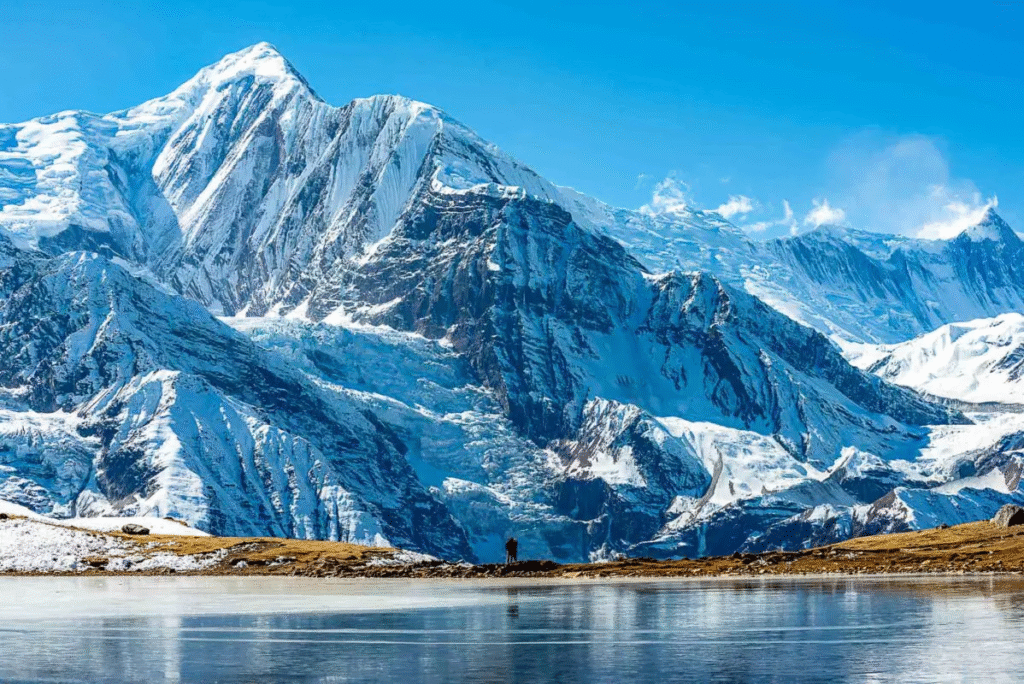Explore Nepal’s top trekking and mountaineering experiences. From Annapurna’s beginner friendly trails to Everest’s challenging heights, discover tips, itineraries and essential guides for your adventure.
Nepal is a paradise for adventure enthusiasts. Whether you are taking your first steps on the Annapurna trails or dreaming of climbing Everest, the country offers experiences that are both breathtaking and unforgettable. This guide will help you plan your trek or mountaineering journey with tips for beginners and aspiring climbers alike.

Trekking Through Annapurna: A Beginner’s Guide
Annapurna is perfect for first time trekkers. Known for its scenic landscapes, lush forests, terraced hills, and snow capped peaks, it is an ideal region to start your Nepal adventure.
Tips for First-Timers:
- Best Routes: Ghorepani Poon Hill Trek and Annapurna Base Camp Trek are popular for beginners.
- Accommodation: Teahouses along the trails offer cozy rooms and authentic Nepalese food.
- Fitness Preparation: Moderate fitness is sufficient but daily walking and uphill practice help.
- Local Culture: Engage with Gurung and Magar communities to experience authentic Nepalese life.
Trekking Annapurna balances adventure and comfort making it a favorite among novice trekkers.
Why Trek Annapurna?
Annapurna is considered one of the safest and most accessible trekking regions in Nepal. Unlike Everest, it provides moderate trails, cozy teahouses and opportunities to experience local culture along the way. The scenery changes constantly from subtropical forests to alpine landscapes making every step memorable.

Best Routes for First-Timers
- Ghorepani Poon Hill Trek: A short 4-5 day trek with panoramic Himalayan views, perfect for beginners.
- Annapurna Base Camp Trek: A slightly longer trek (7-10 days) that takes you closer to the mountains and offers stunning natural beauty.
Both routes provide manageable distances, welcoming teahouses and cultural experiences that make them ideal for first-time trekkers.
Accommodation and Food
Along Annapurna trails, teahouses provide basic yet comfortable lodging. Meals typically include rice, dal, vegetables, and local specialties like momo dumplings. Staying in teahouses gives you a chance to meet other trekkers and experience Nepalese hospitality firsthand.
Fitness Preparation
While Annapurna trekking doesn’t require extreme fitness, basic preparation helps:
- Daily walks and uphill practice
- Cardio exercises like jogging or cycling
- Stretching and light strength training
Good preparation ensures you enjoy the trek without fatigue and makes the journey more comfortable.
Experiencing Local Culture
The Annapurna region is home to Gurung and Magar communities. Trekking here offers a chance to interact with locals, learn about traditional lifestyles and even participate in cultural events or festivals if your timing aligns.
Tips for a Successful Trek
- Pack Light: Bring essentials only including proper trekking shoes and warm clothing.
- Stay Hydrated: Drink plenty of water and avoid altitude sickness.
- Respect Nature: Follow responsible trekking practices and minimize waste.
- Hire a Guide: Especially if it is your first trek, a local guide enhances safety and cultural understanding.
Annapurna vs Everest Trekking: Which Adventure Suits You?
Nepal offers some of the world’s best trekking experiences but Annapurna and Everest stand out for different reasons. Here is a quick comparison to help you choose your next adventure.
Difficulty Level
- Annapurna: Beginner friendly. Trails are moderate, teahouses are frequent and altitude is manageable.
- Everest: Challenging. High altitudes, longer treks, and tougher terrain. Requires good fitness and acclimatization.
Duration
- Annapurna: 4-10 days depending on the route (Ghorepani Poon Hill or Annapurna Base Camp).
- Everest: 12-16 days for Everest Base Camp trek; longer if attempting higher climbs.
Scenery & Highlights
- Annapurna: Diverse landscapes, terraced fields, forests, cultural villages, panoramic mountain views.
- Everest: Majestic Himalayan peaks, Everest Base Camp, Sherpa culture, glacial views, rugged landscapes.
Accommodation & Facilities
- Annapurna: Frequent teahouses, basic but comfortable food and lodging.
- Everest: Teahouses available but fewer; higher prices due to remote location.
Best For
- Annapurna: First-time trekkers, moderate adventurers, cultural experiences.
- Everest: Experienced trekkers, high-altitude adventure seekers, mountaineering enthusiasts.
Both treks offer unforgettable Himalayan experiences, but your choice depends on fitness, time, and the level of challenge you’re seeking.
Read our next blog for a full Everest Trekking Guide to prepare for the ultimate Himalayan adventure!


